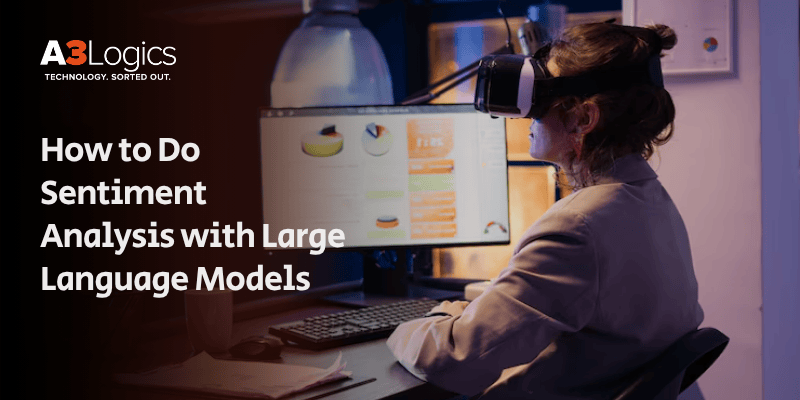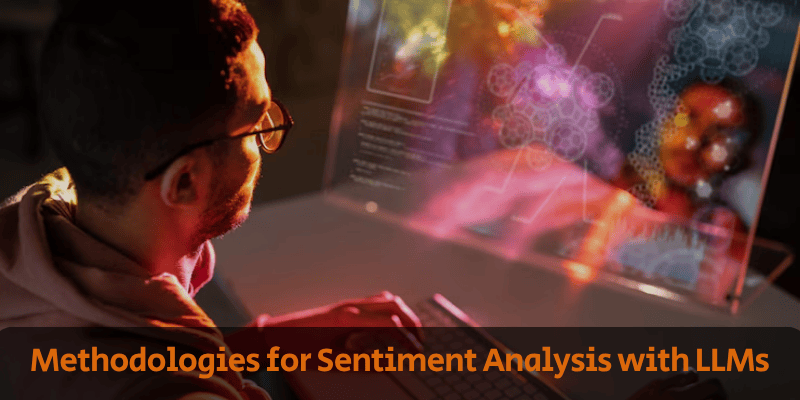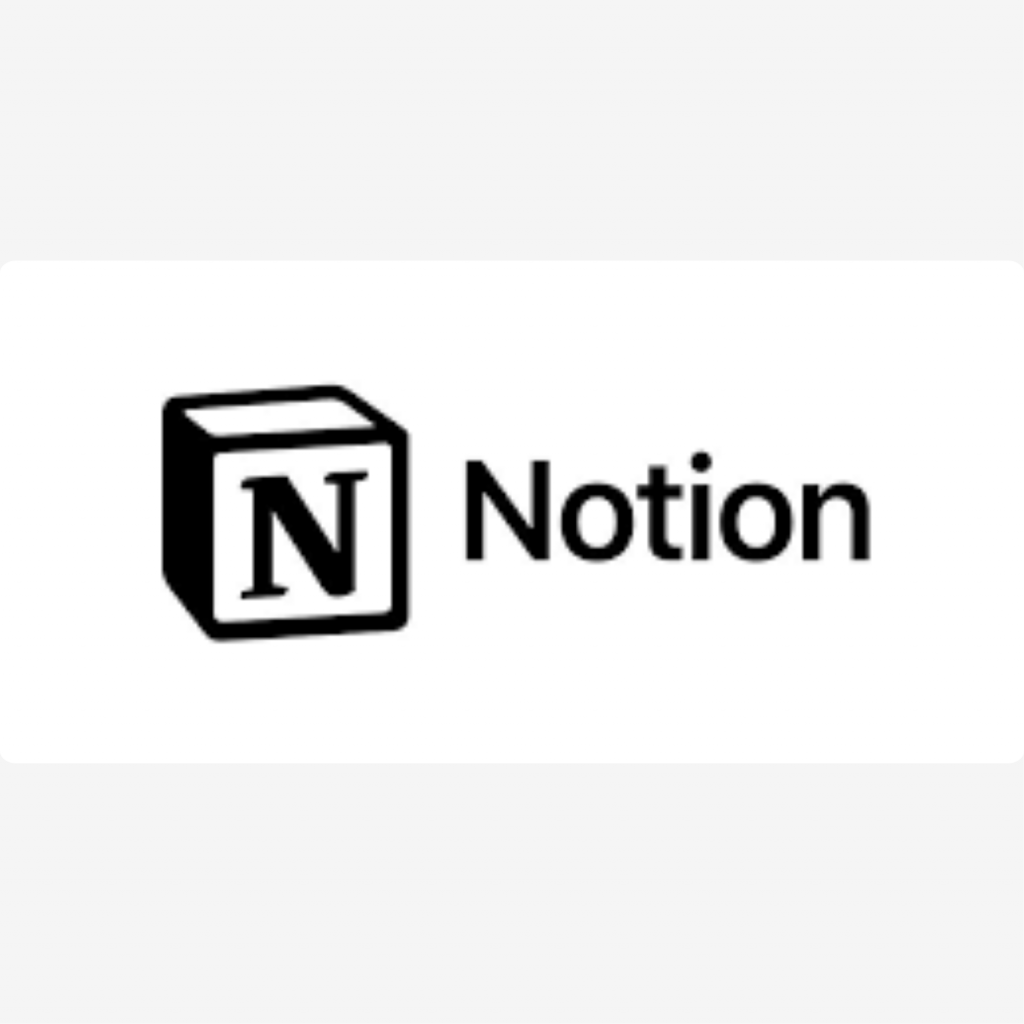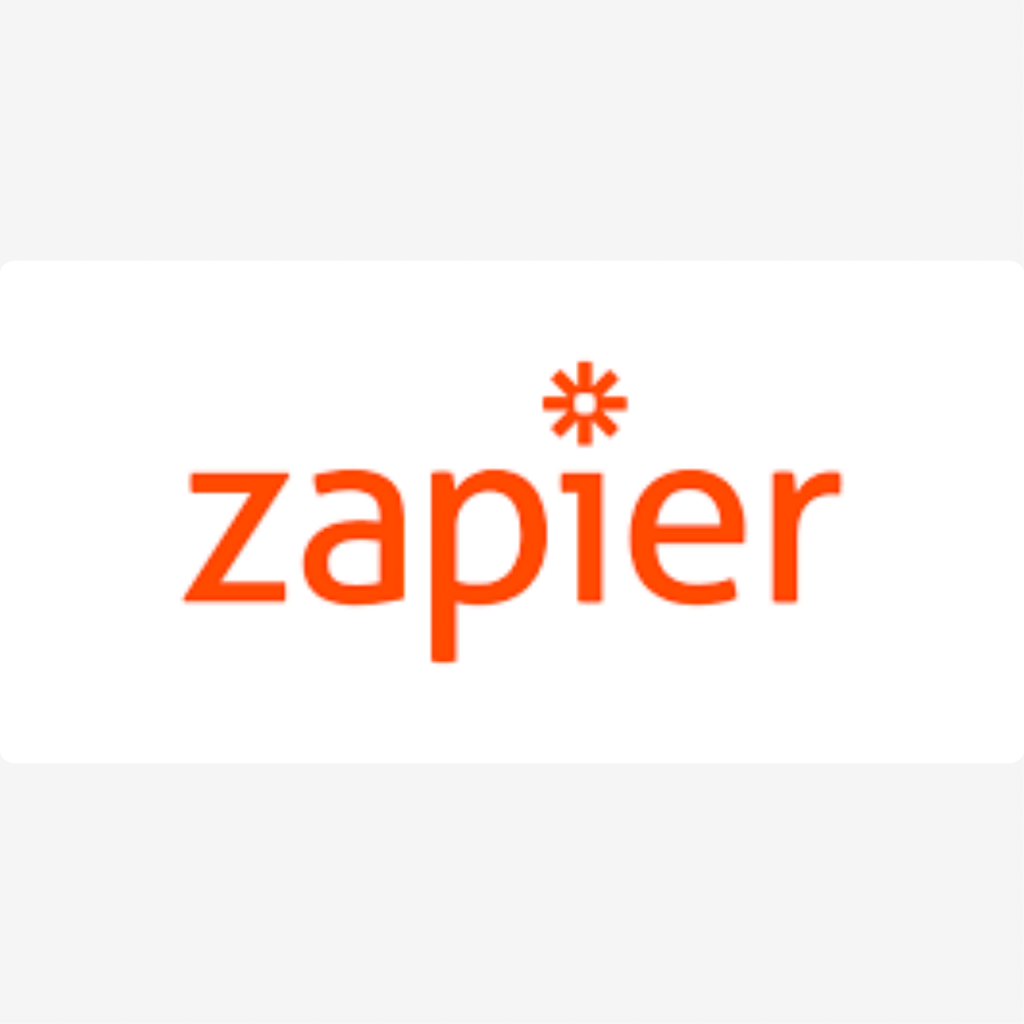Sentiment Analysis with Large Language Models in the field of AI is a typical method of locating people’s emotions or opinions, whether happy, affirmative, angry, or displeased, by analyzing their texts. Today, companies need it highly for understanding customer emotions, service improvement, and brand planning. However, most existing approaches, such as lexicon-based systems or naïve machine learning models, cannot locate the context, sarcasm, or implicit meaning.

Large language models (LLMs) rescue us there. These models are enhanced with improved language understanding and scaling and improved support for multilingual understanding. What we’re doing in this blog here is instructing you on how to do sentiment analysis with large language models, along with practical ways of getting it done, tools to utilize, when to use such LLMs in reality, and best practices so you can get started.
Table of Contents
Understanding LLMs for Sentiment Analysis
> What are LLMs?
Large Language Models, or LLMs, have changed how we talk and conduct business with words. LLMs can learn to recognize human speech to an incredibly sophisticated point. LLMs like GPT-4, BERT, and Mistral have been trained using huge data sets. So, they know context, tone, and shading of meaning in just the way that a person does.
Unlike other traditional Natural Language Processing (NLP) techniques, LLMs forecast the next word in a sequence. Its simple but powerful approach allows it to process challenging language tasks. This is precisely why most companies and researchers today consider how they can leverage sentiment analysis via large language models.
> Definition of LLMs (e.g., BERT, GPT-4, Mistral) and Their Architecture
Large Language Models (LLMs) use transformer models, and transformers work based on mechanisms referred to as feed-forward layers and self-attention. They enable the models to see words in the meaningful context of a particular sentence.
BERT, for instance, can note down text both ways, from right to left and from left-to-right. Being bidirectionally enabled, it can learn sentence structure and meaning more naturally.
GPT-4, however, is an autoregressive model, i.e., word by word, from just previous words to predict the next. Extremely good at generation but equally good at classification, too, if fine-tuned well.
Mistral, the latest big language model, is an open-weighted, low-cost specialist. It is low-computing-requiring with reasonable performance, both a boon for start-ups and business giants.
These models differ but share one thing in common: seeking and using human language at an affordable price.
> Why They Excel At Sentiment Analysis: Context Awareness, Handling Sarcasm/Humor, and Multilingual Capabilities
LLMs are superior to previous methods of sentiment analysis as they have three advantages
- Contextual Sensitivity: Previous models cannot understand context, while LLMs are aware of full sentence meaning, even if word orders are tricky or irregular.
- Sarcasm and Humor Handling: Computers do not handle sarcasm and humor but employ big-scale training to identify implied emotional cues and social context.
- Multilinguality Skills: Most LLMs have been trained in a large number of languages, and that makes them prepared for sentiment analysis with LLMs globally.
Since they consider reviews from customers on social media or product comments, these models will be best suited for emotion detection tasks compared to traditional NLP solutions.
> Types of LLMs for Sentiment Analysis
There are various categories of LLMs depending on your needs for sentiment analysis. So, when choosing an LLM for sentiment analysis, you must distinguish between pre-trained vs. fine-tuned and general-purpose and domain models.
> Pre-trained vs. Fine-Tuned Models
You can use either pre-trained or fine-tuned LLMs as per your requirements.
- Pre-Trained Models: They are pre-trained and have general, broad knowledge. Less configuration is needed, and they perform best on light sentiment tasks.
- Fine-Tuned Models: Pre-trained models are fine-tuned for specific sentiment data. This way, they can be of much service to more accurate tasks such as product review analysis or political opinion tracking. Pre-trained models can give convenience. The fine-tuned ones are also providing depth to the model, as well as accuracy.
> Domain-specific vs. General-Purpose Models
General models such as GPT-4 and Mistral could be trained using the web’s regular content for any topic. They are designed and can carry out any task set in any field. Nonetheless, they might mistakenly take up industry jargon or context in domains like health or legal ones.
Focused on the domain, sector-specific models are designed to have education data for a specific industry. For instance, a medical model will understand patient jargon and doctor’s language much better. The models are best at opinion categorization in the domain.
If you want to know how to do sentiment analysis with large language models, you need to specify the subject area of your data. If we talk about general-purpose content like product reviews or social media posts, then general-purpose models are ok. However, domain models trained in your area will perform better for highly specialized tasks.
Methodologies for Sentiment Analysis with LLMs

As soon as LLMs get into the limelight, their sentiment analysis methods evolve. Previously, it used to be full of rigid rules in naïve machine learning. But today, with sentiment analysis in LLMs, we can employ more flexible and efficient methods like zero-shot learning, fine-tuning, and prompt engineering.
1. Zero-Shot & Few-Shot Learning
Zero-shot learning ensures that an LLM can execute tasks without particular training cases. It will solely focus on the model’s general knowledge alone. For example, you may ask, “Is this review praising or criticizing?” and the model can predict it by examining the feedback of the customer.
Few-shot learning, however, will include a few labeled examples in the prompt. However, note that it performs better with minimal setup. They are best and give you more precise answers where there is little labeled data in the prompt.
The method is highly beneficial when figuring out how to do sentiment analysis with large language models on new or unfamiliar ground.
2. Fine-Tuning LLMs
Fine-tuning, however, deals with training the basic LLM with different sorts of sentiment training data to make it more custom. Therefore, with this, you can expect to get a personalized model for your domain. For instance, a fine-tuned model for restaurant reviews will identify tone and slang even more.
Though it needs more resources in the customization process, fine-tuning models are your go-to models. They will be specifically ideal for you if your niche deals with accuracy above anything.
3. Prompt Engineering
Prompt engineering is comparatively lighter, and one can easily enhance sentiment analysis. You can simply nudge the model with your preferable instructions or examples in the prompt. For instance, phrasing like “Classify the following review as Positive, Negative, or Neutral” guides the model’s answer; here, you don’t need to retrain, and it’s perfect for rapid experimentation.
To see more about how companies apply these methods, go to this comprehensive guide to sentiment analysis with Large Language Models and connect with the top LLM development company.
Step-by-Step Implementation
You need to follow a step-by-step process to learn how to do sentiment analysis using large language models. This section provides each step, from data gathering to outcome measurement. Despite the ability of the models, performance still relies on an appropriate setup and timely attention.
1. Data Collection & Preprocessing
The first step is collecting quality text data with labeled sentiments—positive, negative, or neutral. You can source this from product reviews, social media, customer support tickets, or surveys, wherever you can collect data. Once collected, this data needs preprocessing. This includes:
- Removing noise (HTML tags, emojis, etc.)
- Normalizing text (lowercasing, removing stop words)
- Tokenization (breaking text into words or phrases)
High-quality input ensures your LLM sentiment analysis is accurate and pertinent. The purer your input, the better your output.
2. Model Selection
Your choice of model varies based on your use case. You can use a broad model, such as GPT-4, or a robust but light model, such as Mistral. If you want to score in a specific industry, utilize a domain-specific model fine-tuned on text about it.
Decide whether you require zero-shot, few-shot, or fine-tuned behavior. This will affect model behavior and infrastructure needs. In new companies, knowing LLM vs NLP can assist in making smarter model decisions.
3. Fine-Tuning Process
When you decide to fine-tune, the process is as follows:
- Dividing your dataset into a training set and a validation set
- Training the model on labeled sentiment examples
- Tracking loss and accuracy during training
Fine-tuning tunes precision and adjusts the model to your dataset’s unique tone and language trends. This is something that can be accomplished with technical tools, but it gives back better LLM sentiment classification when applied to real-world usage.
4. Evaluation Metrics
Once trained, test with simple metrics:
- Accuracy: Number of correct predictions divided by total predictions.
- Precision & Recall: Particularly useful when negative or positive sentiment is preferable to identify.
- F1 Score: Precision vs recall compromise.
These are signs of the goodness of your model in managing emotion and intent behind words. To go deeper into how you do things and the tools to do them, read sentiment analysis with Large Language Models.
Tools and Frameworks

There are quite a few lot of tools that developers use to perform Sentiment Analysis With LLMs. You can get pre-trained frameworks, depending on which you can use to build up your custom sentiments in the LLM. Let us discuss these tools and frameworks one after another.
1. Hugging Face Transformers
This platform is gradually becoming the backbone of the ongoing LLM development. Here, you can get a thousand pre-trained models to work on using different domains like computer vision, multimodal tasks, audio, and NLP. It offers you a handful of datasets and model hubs that make you perform LLM sentiment classification with simple and minimal coding.
2. Pre-trained models, pipelines, and datasets
These three are the basic pillars of efficient sentiment analysis, as the models get more efficient only through data training. You can use models like BERT or RoBERTa for this, as they are fully trained through a large text database. Meanwhile, the job of efficient pipelines is to set the roadway for model selection, further data preparation, and performance evaluation. Lastly, the dataset you feed needs to be devoid of biases; however, it gets difficult to tone down generic user perspectives.
3. PyCharm Integration
PyCharm provides a favorable development environment for sentiment analysis. It perfectly mingles with different sentiment analysis libraries, including NLTK and other transformers. With the help of these libraries, you can conduct sentiment analysis inside PyCharm. This is especially helpful if you are using Python for LLM development.
4. IDE setup for LLM development
As you set your Integrated Development Environment (IDE), choose the one that offers more comprehensive tools for writing, testing, and debugging code. You can use Python 3.8+ for this purpose and strive to get GPU support. Also, see if the platform provides Cloud support from AWS or Colab.
5. Cloud Platforms
As you can see from the discussions above, data is the prime and most important thing for training models for sentiment analysis. Therefore, to back the entire process, you can choose cloud platforms like Google Colab, as it is free, or AWS, as it is highly scalable.
6. GPU/TPU resources (AWS, Google Colab).
AWS and Google Colab offer GPU and TPU access to actively speed up the training and inference. Choosing between them depends on whether you want a free cloud resource (Google Colab) or one that offers enterprise-level deployments (AWS).
7. Libraries
Another important thing you cannot neglect while searching for aids for sentiment analysis with LLMs is the library. There are three popular libraries, TensorFlow, PyTorch, and spaCy, among which you can consider any one depending on your needs.
8. TensorFlow, PyTorch, spaCy
Google owns TensorFlow and can be utilized for deep learning your model, whereas PyTorch is under development within the Facebook AI lab. It can be used primarily for big training up to the production level, whereas PyTorch is mainly utilized for both.
Advanced Techniques
Other than maintaining the fundamental needs, the higher you climb, the more sophisticated techniques are the standard procedure on how to do sentiment analysis with Large Language Models. You can fine-tune your LLMs’ sentiment analysis to such a level of precision, fairness, and conciseness with sophisticated techniques.
1. Domain Adaptation
Training your LLM on sector-specific data will make your model compatible and helpful to that sector. It will assist your model in comprehending the varied usage of a similar term and its varied meanings in varied industries but for varied purposes. For example, in medicine, one can use the sentence “the patient is stable now” to impress. But, being an industry, “the market is too stable” is a kiss of death to anyone who desires some action for some profit. Thus, you need to hyper-tune your model with words like these at the field level to deal with such fine sentiment variation word level in annotation.
2. Handling Multilingual Data
To become a successful business company, the business firm needs to go global. Multilingual service by their LLMs is a requirement for organizations today by default. You can use multilingual LLMs like XLM-R to serve such global customers because it is pre-trained for over 100 languages.
3. Bias Mitigation
Routine bias elimination processes are crucial to rendering your model emotionally neutral. You can try giving it a well-balanced dataset, routine updating, and adversarial training. The output will be neutral, original, and tactical, particularly on sensitive subjects.
Challenges and Solutions
LLM sentiment classification, like any other potential intervention, has its limits. To tap its full potential, you have to wed them and pick their solutions along the way.
Challenge 1: Computational Costs
GPT-4 and most widely employed LLM models are computationally expensive especially at training stages and ongoing fine-tuning, hence their deployment costing a lot of money.
Solution: Optimizing with quantization or smaller models (e.g., DistilBERT).
To address this problem, some developers have opted to use model optimization techniques like pruning, quantization, and distillation. Others opt for smaller models, e.g., DIstilBERT, instead of BERT because the former is lightweight and, therefore, more affordable.
Challenge 2: Data Scarcity
Plain data is an issue, particularly if you’d like to train your model on some related-to-domain data. Developers also face a huge demand for recent data.
Solution: Data augmentation (paraphrasing, back-translation)
While resolving this problem, you may intelligently apply some data augmentation techniques, such as paraphrasing and back-translations. Through them, you may create new training sets for your model, translate it as far as possible into other languages, and paraphrase for novel input simply to input the model’s data storage.
Challenge 3: Ethical Considerations
It is better to address the ethical issues that LLMs raise in their methodology regarding privacy, fairness, and transparency of action. Sentiment models tend to most frequently inadvertently leak bias or make uninformed assumptions that raise eyebrows.
Solution: Privacy, transparency, and fairness in sentiment analysis.
To address this problem, AI developers have to take up the onus of accessing anonymized input data and offer greater transparency of with whom they are communicating so that they can make choices based on LLMs. They have to make regular checks to free themselves from prejudice.
Use cases of Using Sentiment Analysis with LLM
Sentiment analysis with large language models is highly beneficial for businesses to understand how their customers are acting what his/her sentiment is, and can forecast an expected outcome. Below are the large spaces where organizations are adopting this technology to a large extent now.
1. Customer Support
Customer service is enabled with quick turnaround. Businesses can read customer support requests, chats, or emails into LLM sentiment analysis. Complaints are immediately converted into supported ticket priorities that must be replied to in real-time. Customer wait time is reduced, and customer satisfaction is maximized.
2. Automating feedback analysis for faster resolutions.
It’s a lot of work manually reviewing thousands of reviews or survey comments. An LLM simplifies this process by abstracting feedback and annotating it with sentiment. They surface repeat issues or rewards, allowing teams to act on insights sooner and more informally.
3. Brand Monitoring
Brands are everywhere, being talked about online. Sentiment analysis with LLMs enables businesses to track real-time social media and forums and review sentiment about their products or services. They can measure how feelings change due to a successful campaign or whether it is backfiring or not.
4. Tracking sentiment on social media.
Using large language models, brands can more efficiently handle their social media accounts by analyzing posts, tweets, and comments under their brand name. This can also help them get through trending topics, witness their impact on the general public’s emotions, and utilize it further for converting sales.
Real-World Applications
> Case Study
A global retail brand had increasing product reviews from its online stores on various platforms. Their customer support team devoted hundreds of hours to manually tagging reviews for tone and urgency. By debiasing BERT, a powerful large language model, the company automated sentiment typing and achieved high performance.
The result is a 70% reduction in manual review time and quicker issue resolution. The model discovered feedback trends, such as the most common product deficiencies and the highest-performing products. Employing this knowledge, the firm redesigned its product and got better customer satisfaction.
1. Microsoft

Microsoft has deeply embedded OpenAI’s language models into its ecosystem. Through Azure OpenAI Service, developers can access fine-tuned versions of GPT models for sentiment analysis and beyond.
Besides, the counterpart Microsoft 365 Copilot brings LLMs into Word, Excel, Outlook, and Teams themselves. For instance, Copilot helps summarize emails, read survey responses, and evaluate tone—all in real-time. It enhances productivity and gives customers a robust tone analysis mechanism in daily workflows. That is why around 70% of Fortune 500 companies are using Microsoft 365 Copilot right now.
2. Salesforce

Salesforce uses OpenAI models as the basis for Einstein GPT, providing conversational AI for customer relationship management (CRM). With LLM-based sentiment analysis at the core, Salesforce customers can automatically add customer sentiment to support cases, emails, and chats.
It enables service teams to foresee issues and tailor communication based on customer feelings, ultimately driving engagement and loyalty. Around 672 companies are using Salesforce’s Einstein GPT in 33 countries worldwide.
3. Notion

Notion AI, Notion’s built-in intelligent assistant, utilizes OpenAI technology to streamline writing, summarizing, and brainstorming functions. While long known to be productivity-oriented, Notion AI also aids in detecting tone and rewriting the tone of text drafts.
Natural evolution of LLM sentiment classification creates more empathetic and effective communication within documents, notes, and team posts. With around1.29% market share, Notion ranks at no 3 in providing smart interactive analytics to its users.
4. Shopify

Shopify employs OpenAI-powered models to assist its merchants with product descriptions and customer service through live chats. Its functionality will automatically detect the tone of customer questions so merchants can respond to them with a better and more personalized tone.
Sentiment detection also assists in detecting negative reviews so that companies can respond to them instantly and uphold their reputation.
5. Zapier

Zapier, a workflow automation tool, launched OpenAI integrations that allow customers to automate based on natural language. Customers can, for example, create Zaps that locate social media posts or emails with certain sentiments and send them to the respective team.
The smart application of sentiment analysis with the help of LLM makes automation more possible to attain and attuned to emotional nuances in words.
Conclusion: Sentiment Analysis with LLMs
Using sentiment analysis with large language models can liberate deep business minds. Whether customer service, reputation management, or automatic feedback loops, sentiment analysis using LLM brings speed, accuracy, and mass emotional intelligence. And the smarter the models become, the more such innovations are being used by all types of industries—commerce, banking, and so on—in a race to stay ahead. By combining the correct data, tools, and techniques, companies can convert regular language into useful signals for better-informed choices and more enchanting customer experiences.








